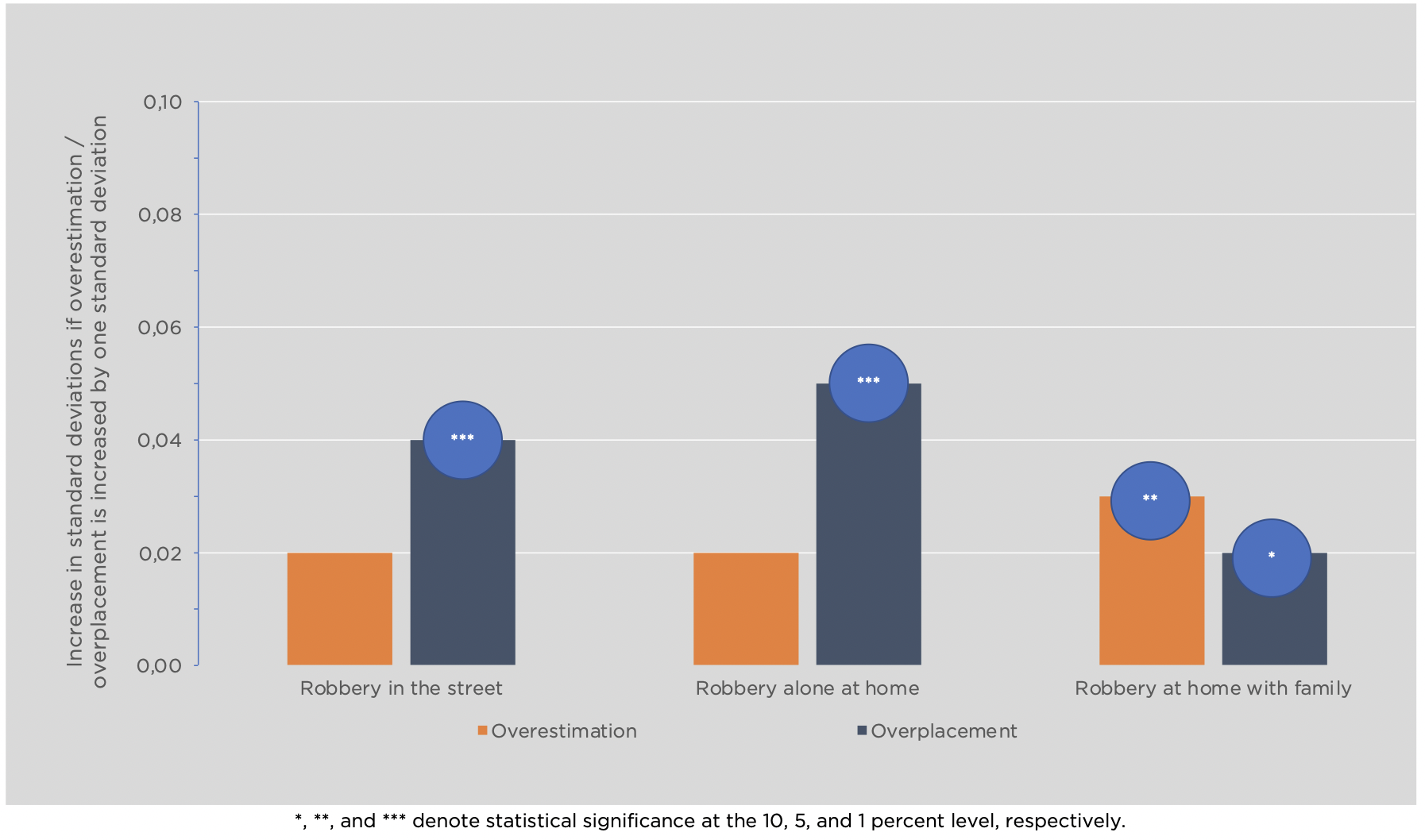Safety and Behavioral Biases: Overconfidence and Gun Preferences.

Context
Overconfidence – people’s tendency to overestimate or exaggerate their own capacity to perform a certain task – is a frequent source of risky behavior, associated with adverse outcomes in areas such as health, finances, and politics. It may also affect public policy equilibria, if political representatives and voters make decision not based on their actual ability but on their biased self-perception. One such area is the possession and use of guns, both of which are associated with higher rates of fatal accidents, gun-related homicides, and suicides. This might suggest that levels of gun access are higher than the optimal equilibrium would suggest. In Latin America, easy access to guns and an influx of guns are related to higher mortality rates and violence. Given these high welfare implications, it is important to explore how the preference for the use of and accessibility to guns might be a consequence of overconfidence.
The Project
With the aim of understanding the relationship between overconfidence and gun attitudes, the IDB conducted an online survey in six countries of the Americas. Data gathering took place in 2019. The project explored correlations between two types of overconfidence, overestimation and overplacement, and attitudes towards guns, their use, and resistance to crime.
Behavioral Analysis
Behavioral Barriers
Overconfidence: Also called superiority bias. This is the tendency to overestimate or exaggerate our own capacity to perform a certain task. In this case, people might overestimate their ability and judgement when using guns.
Over-optimism: Optimism bias makes us underestimate the probability of negative events and overestimate the probability of positive events. People might underestimate the risks involved in carrying and using guns and overestimate their potential benefit in scenarios of, among others, robbery.
Behavioral Tools
Feedback: It is an effective tool to enhance awareness of the consequences of various choices. It may fill knowledge gaps and foster the search for efficient alternatives. For instance, people who receive feedback that they are overestimating their abilities might adjust their self-assessment for future occasions.
Framing: Given the tendency to draw different conclusions depending on how information is presented, the desired options can be presented so as to emphasize the relevant part of the information, as well as to highlight the positive or negative aspects of a decision, leading an option to be perceived as more or less attractive.
Intervention Design
To explore the link between overconfidence and gun attitudes, the IDB conducted an online survey in 2019. The sample consisted of 7,298 adult individuals from six countries: Argentina, Brazil, Chile, Colombia, Mexico, and the United States, with each sample being representative for the adult population in the respective country.
The first component of the survey operationalized the dependent variables. It addressed attitudes in regard to guns and gun usage by security forces and civilians as well as hypothetical reactions to a crime scene. For instance, participants were asked if they agree that civilians should be able to carry weapons in the street or how they would react if they were robbed by a criminal at night.
A second component measured overconfidence, the independent variable, with two operationalizations. One one hand, overestimation was tested, which happens when people believe that their abilities are better than they actually are. For that purpose, participants answered questions from general interest topics that are orthogonal (i.e., not highly related) to gun preferences. For instance, participants were asked to indicate the men’s winner of the Soccer World Cup in 2014 in Brazil, followed by a question on how sure they were to know the right answer. The difference between right answers and their estimated score provided the overestimation index as a measure for absolute overconfidence.
On the other hand, the overplacement variable measured relative overconfidence in situations in which individuals over-rank themselves relative to others. This component required participants to compare themselves with the average citizen in regard to four dimensions (responsibility, decision making, morality, gun use). The last dimension in regard to the use of weapons asked: “If you had a weapon, do you think you would use it more or less responsibly than the average citizen?” Overplacement was included in the analysis, both with the four dimensions separated as well as in the form of one common factor extracted from a principal component analysis (PCA).
Finally, a set of controls such as gender and age was included and accompanied by different modifications of both dependent and independent variables in the regression analysis.
Challenges
- The regression design does not allow for causal inference. While it can demonstrate correlations, it cannot demonstrate causations.
Results
- The results indicate that overconfidence is significantly and positively associated with stronger preferences for carrying weapons and resisting to hypothetical scenarios of robbery (Figure 1 and 2). Measurements for overestimation are consistently associated with a higher gun carrying preferences. For instance, an increase in the overestimation index by one standard deviation (sd) increases the preference for police, guards, and civilians at home carrying / using guns by 0.03 sd and for civilians in the street by 0.06 sd, with all results being significant at least at the five percent level.
- The positive relationship between the principal component analysis measurement for relative overconfidence, overplacement, and gun preferences as well as crime resistance is consistently significant in statistical terms. Detailed analysis of the individual dimensions indicate that this effect might be driven by consistent overplacement in regard to the self-assessment of using weapons responsibly and ability to make decisions.
- Significant control variables that are associated with overconfidence in the form of overestimation tend to be male gender and higher ages, while higher educational status seems to be associated with less overestimation. For overplacement, results tend to be different. Higher ages seem to be associated with underplacement in regard to weapon use, while older people tend to overplace themselves relatively when assessing their responsibility.
Figure 1. Relationship between Overconfidence and Gun Preferences.

Figure 2. Relationship between Overconfidence and Inclination to Resist a Robbery.

Policy Implications
- This study showed that overconfidence is an important driver of attitudes that are associated with higher risks. In the realm of public policy, the study might help to explain why certain regulations in policy areas that entail risk assessments might be lower than the socially desirable optimum.
- Beyond gun regulation, de-biasing overconfident agents who are in decision-making or legislative positions might help reduce the gap between policy optima and current legislative frameworks in a variety of areas. While these changes need serious efforts and time, stronger legislation on the use of seatbelts or on alcohol and cigarette consumption has demonstrated the potentially high welfare effects that less overconfidence-driven policies can have.
